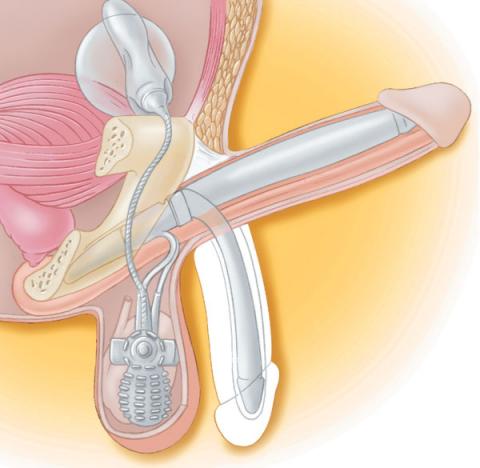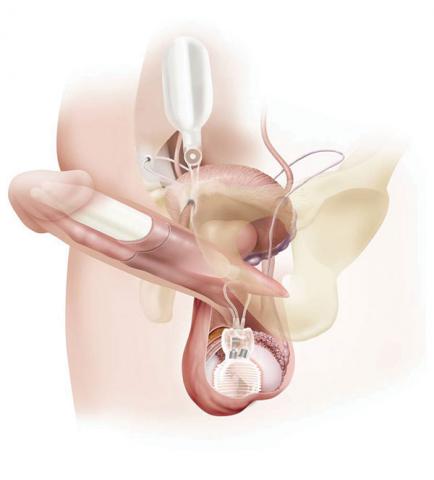What does the procedure involve?
This procedure involves the implantation of inflatable cylinders (the prosthesis) inside the penis. Once inserted it is invisible and not discernable on inspection of the genital area.
Who might need a penile prosthesis?
A penile prosthesis is usually for men with erectile dysfunction who have failed alternative therapies such as oral medication (e.g. Viagra) or intra-cavernosal injections. Some men with Peyronie’s Disease also find a prosthesis is the only practical therapy.
What happens during the procedure?
-
You will receive a full general anaesthetic.
-
You may also receive an epidural (spinal) as well.
-
You will be given intravenous antibiotics before and after the procedure.
-
You will have a small incision just below the penis. This allows the cylinders, reservoir and pump to be sited through the one incision.
-
On occasions the incision will be made above the penis – the doctor will discuss the best alternative with you prior to the operation.
-
Very occasionally a second incision is required to allow safe positioning of the reservoir.
-
A small incision is often made to allow for siting of a “drain”.
Components of a penile prosthesis


The penile prosthesis has been one of the most well established treatment of erectile dysfunction for more than 20 years. This is what is inserted during your operation.
It consists of three components:
-
Cylinders – these are the long cylinders inserted inside the penis. They are inflated by pumping saline from the reservoir allowing the erection to form.
-
Pump – this is sited in the scrotum, and is the device that pumps the saline into the cylinders resulting in the erection.
-
Reservoir – this is the balloon positioned under the abdominal wall that stores the saline used to inflate the cylinders.
There are different types of penile prosthesis – if one type is better suited to you the doctor will discuss with you specifically. For most people either is acceptable.
What to expect during your hospital stay
You will generally be admitted the day of your surgery. The nurse will admit you and prepare you for the operating theatre. The nurse will check that you have not had anything to eat or drink from the midnight prior to your admission, and that your consent form is signed etc.
On your return from your operation, you will have a catheter in your bladder - this will usually be removed the following morning. You will have a drip (intravenous fluid line) in your arm for antibiotics until the catheter is removed.
You will be able to eat and drink, and have toilet privileges, though you should try to rest in bed for as much as possible during the first 24 hours.
Side Effects
All operations have the potential for side effects. Most people do not experience any (< 10% of patients actually do), though it is good to be aware of what they might be:
Occasional - < 5%
-
Burning or blood when you pass urine - usually settles in a few days.
-
Temporary insertion of catheter.
-
Mechanical failure.
Uncommon - < 2%
-
Cylinder dislocation causing deformity in the head of the penis.
-
Urine infection.
Rare - < 1%
-
Wound infection.
-
Infection – general.
-
Erosion of cylinders.
Infection
-
Whilst infection is quite rare it is always regarded as the most important consideration with regards to any symptoms.
-
Established infection is often difficult to resolve when a prosthesis is involved (just the same as a hip replacement).
-
Antibiotics will often be used in a preventative manner.
